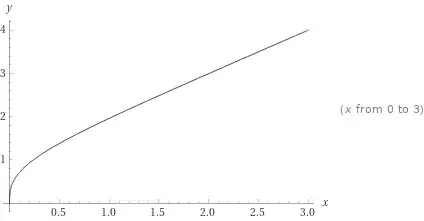1.)
The inverse of your function isn't an elementary function:
$$f(x)=x-\tanh(x)$$
$$x-\tanh(x)=y$$
For algebraic values $y=a$, we have
$$x-\tanh(x)=a.\tag{1}$$
Each elementary standard function (like $\tanh$) can be represented in an exp-ln form:
$$x-\frac{(e^x)^2-1}{(e^x)^2+1}=a.$$
$$x(e^x)^2-a(e^x)^2-(e^x)^2+x-a+1=0\tag{2}$$
This is an irreducible polynomial equation over $\overline{\mathbb{Q}}$ in dependence of $x$ and $e^x$. The main theorems in [Lin 1983] and [Chow 1999] state that those kinds of equations don't have solutions except $0$ in the Elementary numbers or Explicit elementary numbers respectively. Because equation (2) and (1) have the same set of solutions, the same conclusion holds for equation (1).
And it follows with the theorem in Proof Check: Non-existence of the inverse function in a given class of functions that your function $f$ cannot have an inverse that is an elementary function.
2.)
$$-\frac{(x-1-y)}{x+1-y}e^{2x}=1$$
We see, your function doesn't have an inverse in terms of Lambert W. But the equation can be solved in terms of Generalized Lambert W:
$$x=\frac{1}{2}W(^{2y+2}_{2y-2};1)=-\frac{1}{2}W(^{-2y+2}_{-2y-2};1)$$
$-$ see [Mező 2017], [Mező/Baricz 2017], [Castle 2018].
$\ $
[Chow 1999] Chow, T.: What is a closed-form number. Am. Math. Monthly 106 (1999) (5) 440-448
[Lin 1983] Ferng-Ching Lin: Schanuel's Conjecture Implies Ritt's Conjectures. Chin. J. Math. 11 (1983) (1) 41-50
[Mezö 2017] Mezö, I.: On the structure of the solution set of a generalized Euler-Lambert equation. J. Math. Anal. Appl. 455 (2017) (1) 538-553
[Mezö/Baricz 2017] Mezö, I.; Baricz, A.: On the generalization of the Lambert W function. Transact. Amer. Math. Soc. 369 (2017) (11) 7917–7934 (On the generalization of the Lambert W function with applications in theoretical physics. 2015)
[Castle 2018] Castle, P.: Taylor series for generalized Lambert W functions. 2018
